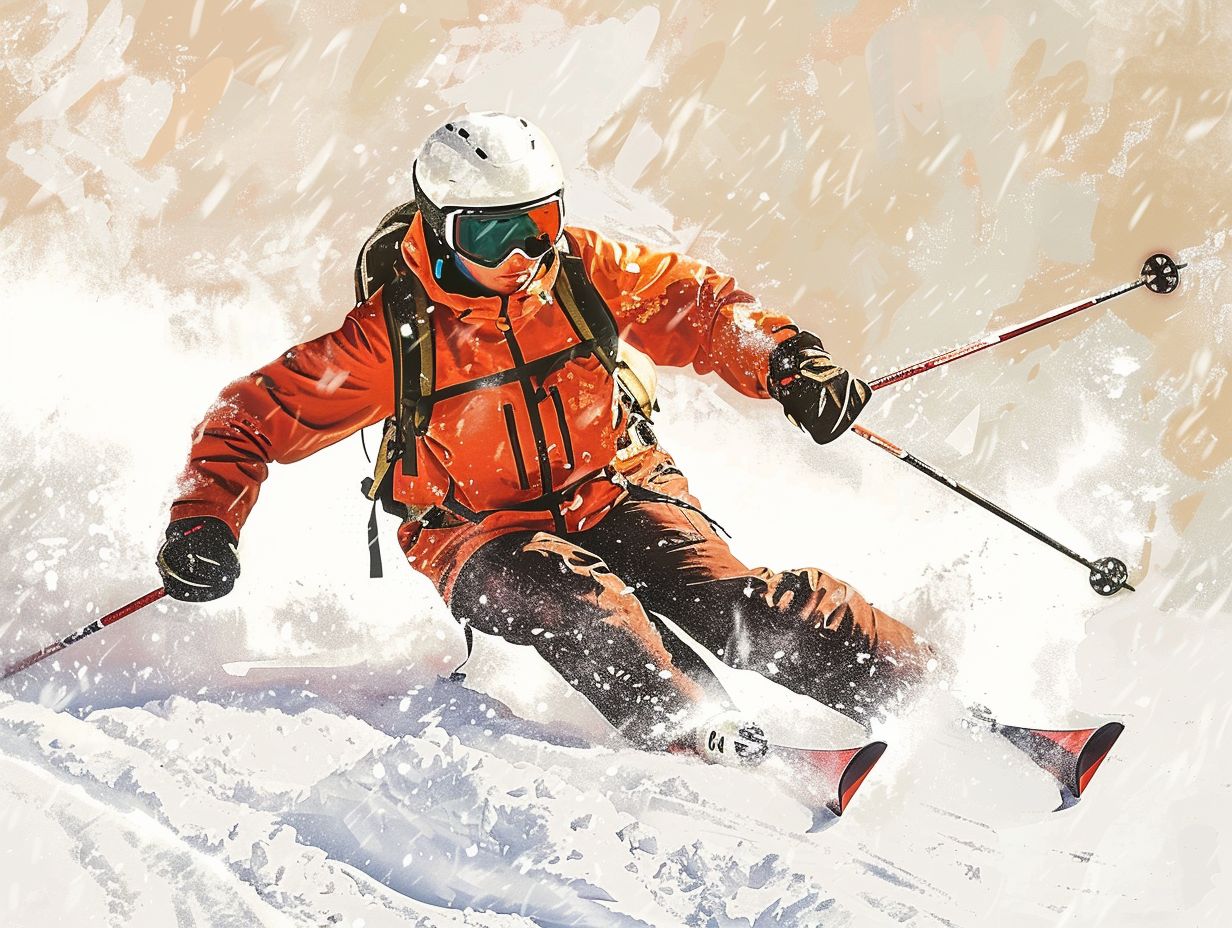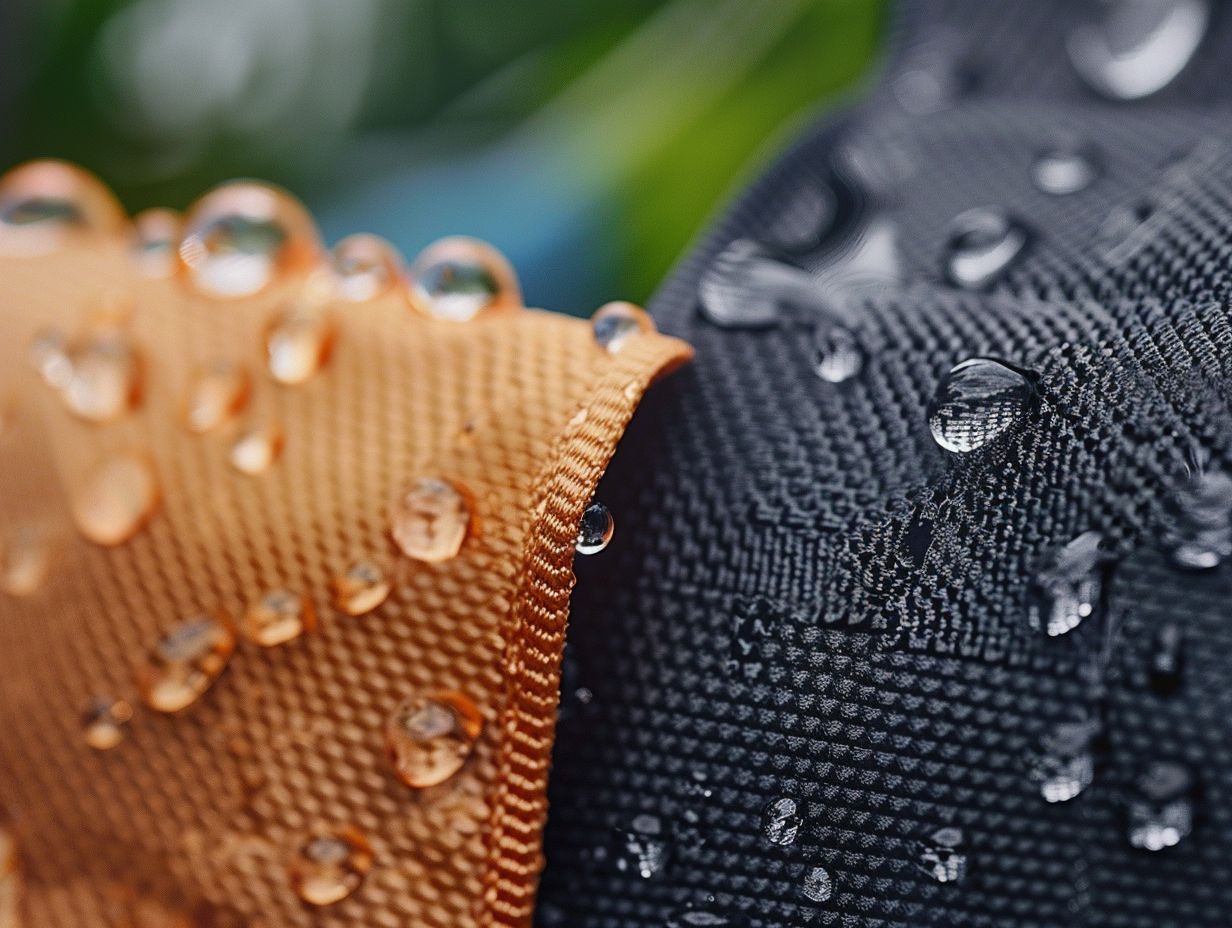20D nylon is a lightweight and durable fabric made from nylon fibers. The “20D” refers to the fabric’s denier, which is a measure of the thickness and weight of the fibers.
In general, a higher denier number means a heavier, thicker, and stronger fabric, while a lower denier number indicates a lighter, thinner, and more delicate fabric.
20D nylon is known for its excellent strength-to-weight ratio, making it a popular choice for outdoor gear, such as backpacks, tents, and rain jackets.
However, it is important to note that 20D nylon is not inherently waterproof. Its water resistance depends on the treatments and coatings applied to the fabric.
DWR Coating makes 20D (almost) waterproof
One way to make 20D nylon more water-resistant is by applying a durable water repellent (DWR) coating. DWR is a chemical treatment that causes water to bead up and roll off the surface of the fabric, instead of being absorbed. This helps to keep the fabric dry and prevents it from becoming saturated with water, which can lead to reduced performance and increased weight.
DWR Performance and Maintenance
DWR coatings are not permanent, and their performance can degrade over time due to wear and tear, exposure to dirt, oils, and other contaminants, and repeated washing. To maintain the water resistance of your 20D nylon gear, it is essential to clean and re-treat it with a DWR spray or wash-in product regularly. Be sure to follow the manufacturer’s care instructions for best results.
PU and Silicone Coatings are most common
Enhanced Waterproofness
Another method of increasing the water resistance of 20D nylon is by applying a polyurethane (PU) or silicone coating to the fabric. These coatings essentially create a waterproof barrier by sealing the pores in the fabric and preventing water from penetrating through.
Pros and Cons of PU and Silicone Coatings
PU and silicone coatings each have their own advantages and drawbacks. PU coatings are typically more breathable, which can be an essential factor in preventing condensation buildup inside tents and rain jackets. However, they can be less durable than silicone coatings, especially when exposed to prolonged UV exposure. Silicone coatings, on the other hand, are highly durable and UV resistant but can be less breathable.
Seamed Sealings are a must
Ensuring Leak-Free Performance
In addition to coatings and treatments, seam sealing is another critical factor in the waterproofness of 20D nylon gear. Seam sealing involves applying a waterproof tape or sealant to the seams of the fabric, preventing water from seeping through the stitch holes. Without proper seam sealing, even the most water-resistant fabric can leak at the seams.
DIY Seam Sealing
If you find that your 20D nylon gear is leaking at the seams, you can perform DIY seam sealing using a seam sealer or waterproof tape designed for the specific type of fabric and coating. Be sure to follow the manufacturer’s instructions for the best results.
Hydrostatic Head Ratings
Measuring Waterproofness
The waterproofness of 20D nylon and other fabrics is often measured using a hydrostatic head rating. This rating indicates the amount of water pressure a fabric can withstand before water begins to penetrate through. A higher hydrostatic head rating means a more waterproof fabric.
What’s a Good Rating for 20D Nylon?
For outdoor gear like tents and rain jackets, a hydrostatic head rating of at least 1,500mm is generally considered sufficient for light to moderate rain. However, for more severe weather conditions or extended periods of rain, a rating of 3,000mm or higher may be necessary. Keep in mind that the overall waterproofness of a product also depends on factors like seam sealing and proper maintenance.
20D Nylon Outdoor Gear examples
Tents
20D nylon is commonly used in lightweight backpacking tents, where its excellent strength-to-weight ratio is highly valued. With proper coatings and seam sealing, 20D nylon tents can provide adequate protection from rain. However, they may not be the best choice for prolonged exposure to heavy rain or snow, as their relatively thin fabric can be more prone to damage and leakage.
In Backpacks
20D nylon is a lightweight and durable fabric commonly used in the construction of ultralight backpacks. Here are some ways in which 20D nylon is utilized in backpacks:
- Outer Shell: Backpacks often feature an outer shell made of 20D nylon. This fabric provides strength, abrasion resistance, and water repellency, making it suitable for various outdoor activities.
- Weight Reduction: 20D nylon is known for its lightweight nature. By using this fabric for the backpack’s exterior, manufacturers can reduce the overall weight of the backpack, making it more comfortable to carry over long distances.
- Ripstop Construction: Ripstop nylon is a type of fabric that incorporates a grid pattern of thicker threads at regular intervals. This design helps prevent tears and rips from spreading. Many backpacks employ 20D ripstop nylon, which enhances the fabric’s durability and ensures it can withstand rough handling and harsh conditions.
- Compression and Packability: Backpacks often come with compression features that allow users to reduce the bag’s volume when it’s not fully packed. The lightweight and flexible nature of 20D nylon make it suitable for these compression systems, enabling users to compact the bag easily.
- Lining and Pockets: Inside the backpack, manufacturers may use 20D nylon as a lining material. This helps protect the contents of the bag, adds durability to the interior, and provides a smooth surface for easy packing and unpacking. Additionally, smaller pockets and compartments within the backpack may also utilize 20D nylon for added strength and organization.
Overall, the use of 20D nylon in backpacks combines lightweight characteristics with durability, water resistance, and tear resistance, making it an ideal choice for outdoor enthusiasts, hikers, and travelers who value both functionality and weight reduction in their gear.
Rain Jackets
20D nylon rain jackets are popular for their lightweight and packable nature, making them ideal for backpacking and hiking trips where weight and space are at a premium.
With a good DWR treatment and seam sealing, a 20D nylon rain jacket can provide effective protection against light to moderate rainfall. However, for more extreme weather conditions or extended periods of rain, a heavier and more robust fabric may be necessary.
Conclusion
Is 20D nylon waterproof? Although 20D nylon is not inherently waterproof, with appropriate treatments and coatings, it can provide a good level of water resistance.
Here are 10 key facts about 20D nylon and its water-resistant capabilities:
1. 20D nylon is a lightweight and durable fabric.
2. The “20D” refers to the fabric’s denier, which is a measure of the thickness and weight of the fibers.
3. 20D nylon is not inherently waterproof but can be made so.
4. A durable water repellent (DWR) coating can enhance the water resistance of 20D nylon.
5. DWR coatings require regular maintenance to maintain their performance.
6. Polyurethane (PU) and silicone coatings can also be used to make 20D nylon more water-resistant.
7. Seam sealing is essential for preventing leaks in 20D nylon gear.
8. The waterproofness of 20D nylon is often measured using a hydrostatic head rating.
9. 20D nylon is commonly used in lightweight backpacking tents and rain jackets.
10. The overall waterproofness of 20D nylon gear depends on factors like coatings, seam sealing, and proper maintenance.





